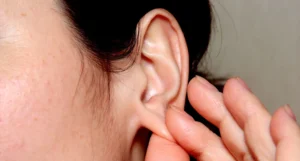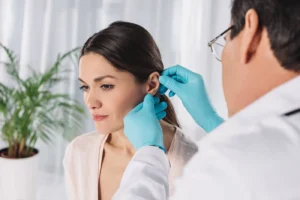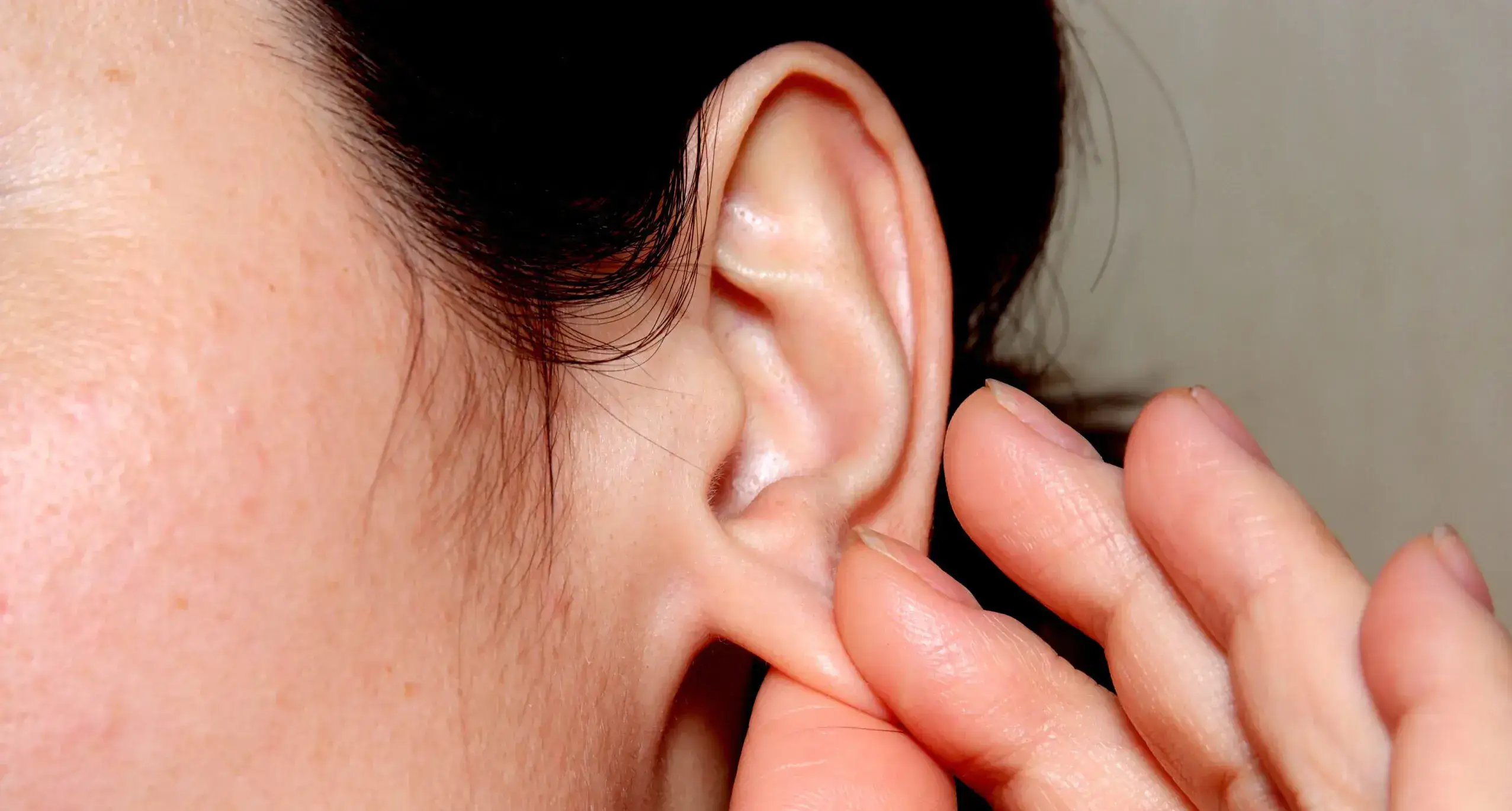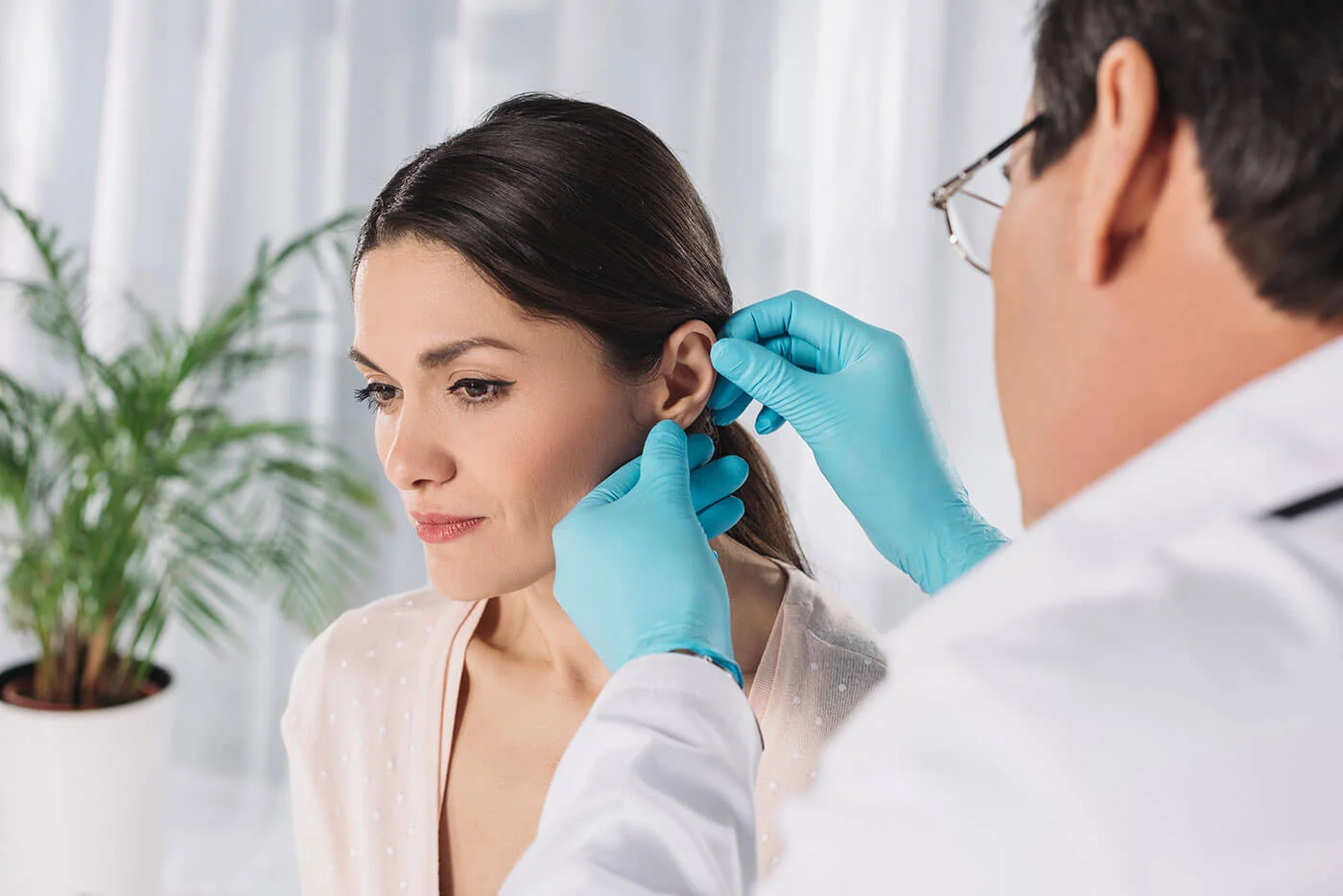Torn earlobes can happen for many reasons—accidents, years of heavy earrings, or even intentional stretching that you may now regret. If you’re thinking about fixing the issue, you’re not alone. Torn earlobe repair isn’t just about aesthetics; it can also restore balance, comfort, and confidence. Whether it’s a small tear or a stretched-out piercing, this simple, outpatient procedure could be the solution you’re looking for. But how do you know if it’s right for you? That’s what we’re here to explore.
Understanding Torn Earlobes
Torn earlobes are a problem more common than you might think. Whether it happens suddenly or takes years to develop, this condition doesn’t just affect how your ears look—it can also be uncomfortable. From small tears to complete splits, the causes behind torn earlobes and the types of damage people experience vary widely. Let’s break it down.
What Causes Torn Earlobes?
Tears in the earlobe are not always the result of a dramatic accident. They often develop due to a mix of regular wear and tear and unfortunate events. Below are some of the most common causes:
- Heavy Earrings: Earrings with significant weight pull down on the delicate tissue over time, leading to stretching and, eventually, tearing.
- Accidental Pulls: A quick yank—whether from catching an earring on clothing or a curious child tugging—can result in an unexpected tear.
- Aging: The elasticity of our skin naturally decreases as we grow older, making the earlobes more fragile and prone to stretching or splitting.
- Improper Piercings: When piercings are placed too close to the edge of the earlobe, they compromise its structure, making it easier to tear.
- Stretching from Plugs: Body modifications, like gauges or plugs, intentionally stretch earlobes. If the skin’s limits are exceeded, tears can form, especially if the individual decides to downsize.
Each of these causes can lead to unique types of damage to the earlobe, requiring varying levels of care or repair.
Types of Earlobe Tears
Not all earlobe tears are the same. They typically fall into three main categories, each with its own characteristics and repair considerations:
- Small Tears: These are minor splits, often at the location of a piercing that has stretched over time. They occur slowly and make it harder to wear earrings because the hole may appear elongated or unstable.
- Elongated Tears: This type results from gradual stretching, often due to heavy earring use or aging. While the earlobe isn’t fully split, it’s noticeably misshapen, with a longer-than-usual piercing hole.
- Complete Splits: These are the most severe type and occur when the earlobe tears entirely into two separate sections. This often happens due to sudden trauma, such as an earring being pulled out forcefully.
Recognizing what kind of tear you have is key to understanding your next steps. Small tears might only require minor fixes, while complete splits often need surgical intervention.
Who is a Good Candidate for Earlobe Repair?
Earlobe repair is a simple yet transformative procedure designed to correct damage caused by accidents, aging, or years of wearing heavy jewelry. Whether you’re dealing with a small tear or a completely split earlobe, understanding if you’re a good candidate starts with recognizing your unique needs and health conditions.
Signs You May Need Earlobe Repair
Sometimes the signs that you need earlobe repair are obvious, while other times, they might be subtler. Here are some common indicators that it could be time to consider this procedure:
- Visible Tears or Splits: If your earlobe has a noticeable tear, whether partial or complete, surgery is often the best way to restore its appearance and functionality.
- Elongated Piercing Holes: Years of wearing heavy or dangling earrings can stretch your piercing hole into a slit, making it difficult or impossible to wear earrings securely.
- Difficulty Wearing Earrings: Do your earrings constantly fall through? If the fit feels unstable, this is a clear sign of a stretched piercing or tear.
- Cosmetic Concerns: Torn or sagging earlobes might make you self-conscious. If your earlobes look droopy, uneven, or scarred, repair could help you regain confidence.
- Stretched Lobes from Gauges: Removing gauges after years of stretching can leave behind large holes or misshapen lobes that often require surgical intervention.
If any of these situations sound familiar, you might benefit greatly from speaking with a specialist about earlobe repair.
Health Considerations for Surgery
Before committing to earlobe repair, your overall health plays a critical role. Here are some factors to keep in mind:
- General Health: Are you in good health? Conditions like uncontrolled diabetes, smoking, or immune system issues can impact healing. It’s important to disclose your medical history to your doctor.
- Age: While the procedure is safe for adults of any age, your skin’s elasticity and healing ability might be better in younger years. Still, older adults can achieve excellent results with proper care.
- Medications: Are you taking blood thinners or other medications that affect clotting? If so, you may need to adjust your medication under your doctor’s supervision before undergoing surgery.
- Smoking Habits: Smoking slows down the healing process. If you’re a smoker, you may be advised to stop several weeks before and after surgery for the best results.
- History of Scarring or Keloids: If you’re prone to keloids or excessive scarring, let your surgeon know. They may suggest additional precautions or alternative approaches to minimize such risks.
By taking these factors into account, you can determine if this procedure is right for you. A consultation with a qualified surgeon will help address your specific concerns and ensure you’re a suitable candidate for this minimally invasive surgery.
Non-Surgical Options for Torn Earlobe Repair
If you’re dealing with a torn earlobe but aren’t ready for surgery, there are non-surgical solutions that can help. These methods are especially suitable for minor tears or stretched lobes and can offer a temporary or less invasive fix. Here’s a closer look at some of the most effective options available.
Dermal Fillers
Dermal fillers are a quick way to rejuvenate earlobes that have lost their shape or volume. Over time, factors like aging or heavy earrings can leave the earlobes looking thin and saggy. Fillers such as Juvederm® or Restylane® are injected directly into the earlobe to plump it up, effectively making it look fuller and healthier.
- How They Work: These fillers are gel-like substances that add volume beneath the skin. The result? An immediate improvement in the appearance of your earlobe.
- What to Expect: The entire procedure is done in-office and usually takes less than 30 minutes. There’s no downtime, and you can go about your day right after.
- Keep in Mind: Fillers aren’t permanent. Typically, they last between 6 to 12 months, after which you’ll need additional treatments to maintain the results.
If you’re looking for a fast and effective way to touch up your earlobes, dermal fillers may be a great choice.
Tissue Adhesives
For minor tears or splits in the earlobe, tissue adhesives can provide a temporary repair. Think of it like a specialized glue for your skin – but one designed to hold delicate tissue together while it heals.
- When They’re Used: Tissue adhesives are ideal for small tears where the earlobe hasn’t completely split. They can help keep the area stable and prevent further damage while healing progresses.
- How It’s Done: A healthcare provider applies the adhesive to the torn section, carefully aligning the skin. Once it sets, the adhesive acts like a barrier, holding everything in place.
- Benefits: It’s a non-invasive and cost-effective option. Plus, it doesn’t require stitches or anesthesia.
While tissue adhesives are a great short-term solution, they’re not meant for more severe injuries. For larger splits, surgical intervention might still be needed.
Skin Grafts
In some cases, skin grafts can be used for earlobe repair without taking the surgical route. This method involves using skin from another area of your body—often behind the ear or from another discreet location—to restore the damaged tissue.
- How It Helps: Skin grafts provide additional support and coverage, particularly for earlobes that have thinned out or have irregular tissue from a tear or stretching.
- Non-Surgical Application: For minor repairs, non-surgical techniques can utilize skin grafts to patch over small imperfections. While this option may sometimes overlap with surgical methods, innovations in grafting make it a possibility for less invasive settings.
- Considerations: This option depends heavily on the state of your earlobe and the expertise of the provider. It’s best suited for individuals who want a more substantial repair without undergoing full surgery.
Skin grafts could be an effective way to address earlobe concerns when other non-surgical options don’t quite fit the bill.
By exploring these non-surgical methods, you have multiple ways to improve the look and feel of your earlobes without committing to surgery. Each technique comes with its own benefits and limitations, so understanding your specific needs is key to choosing the right approach.
Surgical Torn Earlobe Repair
When it comes to repairing a torn or stretched earlobe, surgery is considered the most effective option for lasting results. Whether your earlobe was damaged by heavy earrings, trauma, or prolonged stretching, understanding the surgical process can help you make an informed decision. Here’s what you need to know about the techniques, procedure, recovery, and risks.
Common Surgical Techniques
Different surgical methods are used depending on the severity of the tear and the desired outcome. Here are the most common techniques:
- Side-to-Side Closure: Ideal for minor to moderate tears, this straightforward technique involves stitching the two sides of the tear together. It’s one of the quickest methods and works well for small, clean splits.
- Purse-String Closure: For cases where a piercing hole has stretched out into a round defect, a purse-string suture method is often used. This involves stitching around the perimeter of the hole, cinching it closed like tightening a drawstring bag.
- Z-Plasty: This technique is typically used for more complex tears or for improving the appearance of scars. It involves creating a Z-shaped incision to redistribute tension and reshape the earlobe. Though more intricate, it often provides excellent cosmetic results.
Each method focuses on restoring the earlobe’s natural shape while minimizing visible scarring. Your surgeon will select the best approach based on your unique case.
Step-by-Step Surgical Procedure
The procedure for earlobe repair is relatively quick and straightforward, often performed in an outpatient setting. Here’s what you can expect:
- Consultation and Preparation: During a pre-surgery consultation, your surgeon will assess the damage, discuss your goals, and explain the best repair option for you. They’ll ensure you’re clear about the steps and potential outcomes.
- Local Anesthesia: On the day of the procedure, local anesthesia is applied to numb the earlobe. This ensures you won’t feel pain during the surgery and speeds up the process.
- Incision and Reshaping: Depending on the chosen technique, the surgeon will carefully trim away any scar tissue and create fresh wound edges, making it easier to achieve a clean, seamless repair.
- Suturing: The surgeon will stitch the edges together with fine sutures, meticulously aligning them to ensure a natural, balanced appearance. For more intricate repairs, such as with Z-plasties, additional steps may be involved to reshape the tissue.
- Finishing Touches: Once the stitching is complete, the area is cleaned, disinfected, and protected with a bandage. Instructions for aftercare are provided before you leave the office.
The entire process usually takes about 30 to 60 minutes per ear, and no overnight stay is required.
Recovery Process After Surgery
Healing from earlobe repair surgery is typically smooth and straightforward, but proper aftercare is essential. Here’s what to expect during recovery:
- Initial Healing (First 1–2 Weeks): Swelling, mild bruising, and discomfort are common but manageable. Stitches are usually removed within 7 to 10 days.
- Pain Management: Over-the-counter pain relievers, such as ibuprofen or acetaminophen, can help with any discomfort. Applying ice packs in short intervals may also reduce swelling.
- Activity Restrictions: Avoid strenuous activities that could pull or strain the earlobe. Sleeping on your back or the opposite side is recommended during the initial healing phase to minimize pressure on the repaired area.
- Wound Care: Follow your surgeon’s instructions for keeping the area clean and dry. Gentle cleaning with soap and water or a prescribed solution is usually sufficient.
- Long-Term Healing (4–8 Weeks): The majority of healing occurs within the first month, but it may take up to 8 weeks for the earlobe to fully recover. Your surgeon will guide you on when it’s safe to re-pierce or resume wearing earrings, typically after 6 months.
By following these recovery steps, most patients see excellent results with minimal inconvenience.
Potential Risks and Complications
Like any medical procedure, earlobe repair surgery comes with potential risks. While complications are rare, understanding them can help ensure a smooth recovery:
- Infection: Proper wound care and hygiene are critical to prevent infections. Look out for redness, warmth, or unusual swelling, and notify your surgeon if these occur.
- Scarring: While surgeons aim to minimize scarring, some level of scarring is inevitable. These are often minor and fade over time.
- Asymmetry: Slight differences in shape or size between the earlobes may occur, especially if one side was more severely damaged.
- Bleeding or Poor Healing: In rare cases, excessive bleeding or delayed healing could arise, particularly for patients with underlying health conditions or those who smoke.
- Temporary Numbness: Some patients report a temporary change in sensation around the earlobe due to minor nerve involvement during surgery. This typically resolves on its own.
Most complications can be avoided or minimized with a skilled surgeon, carefully following aftercare instructions, and addressing any concerns promptly.
By knowing what to expect from the surgical repair process, as well as its recovery and risks, you’ll be better prepared to decide if this procedure is the right choice for you.
Post-Procedure Care
If you’re moving forward with torn earlobe repair, equally important as the procedure itself is how you care for your earlobe afterward. Proper post-operative care ensures swift healing and reduces the risk of infections or complications. Below, we break down essential steps for cleaning and maintaining the area, as well as tips on safely re-piercing your earlobe after it’s healed.
Cleaning and Maintenance
Ensuring your repaired earlobe stays clean is a top priority. Taking care of the wound properly during the healing phase wards off infections and promotes healthy recovery. Here’s what you need to know:
- First 48 Hours: Keep the repaired area dry. Moisture can interfere with initial healing and increase the risk of infection. Avoid washing the earlobe or exposing it to steam or water.
- Regular Cleaning Routine: After the first two days, clean your earlobe gently with soap and water, or follow specific instructions from your healthcare provider. Use a cotton swab to avoid unnecessary tugging on the area.
- Antibiotic Ointments: Your surgeon may recommend applying a thin layer of antibiotic ointment. This helps fight off bacteria and keeps the sutures from drying out. Do this carefully to avoid disturbing the stitches.
- Protection: If your surgeon suggests covering the wound, use sterile bandages and replace them daily. Avoid using non-breathable materials that can trap moisture.
- What to Avoid: Be cautious about using alcohol-based products, which may dry out the wound and delay recovery. Also, don’t attempt to clean the area aggressively; overly intensive cleaning can irritate the tissue.
- Monitor for Signs of Infection: Watch for excessive redness, swelling, warmth, or pus. If any of these occur, contact your surgeon immediately.
Proper care isn’t just about cleanliness; it’s about letting your body heal without stress. Think of it like nurturing a fragile plant—you don’t want to overwater or disturb it too much.
Re-Piercing After Repair
One of the most common questions after torn earlobe repair is, “When can I re-pierce my ear?” The answer depends on how well your earlobe heals and the specific guidance of your doctor. Here’s what you should know:
- Healing Period: Most surgeons recommend waiting 6 to 12 weeks before considering re-piercing. This gives the repaired tissue time to fully strengthen and reduces the risk of re-injury.
- Placement Considerations: You’ll likely need to pierce slightly away from the original tear site. This not only avoids putting stress on scar tissue but also ensures a smoother healing process. Discuss this with your piercer or surgeon.
- Choosing the Right Jewelry: Start with lightweight studs made of hypoallergenic materials like titanium, surgical stainless steel, or gold. Avoid heavy or dangling earrings until your ear feels stable—this could take up to six months post-repair.
- Care After Re-Piercing: Once you re-pierce, follow standard piercing aftercare. Clean the piercing twice daily with saline solution or a piercing-specific cleanser. Avoid touching or twisting your earrings unnecessarily to prevent irritation.
- Professional Piercing Only: Skip at-home kits or mall kiosks. For a re-pierced earlobe, it’s essential that a trained professional handles it in a sterile environment. This is especially true if scar tissue is involved.
Waiting can feel tedious, but healing really is the key to success here. Think of it like baking bread—you wouldn’t open the oven too soon, or you’ll ruin the outcome. Be patient, and you’ll be able to enjoy earrings again in no time.
 Photo by Burst
Photo by Burst
Post-procedure care is straightforward but essential. By following these steps, you’ll not only ensure a smooth recovery but also set yourself up for long-term results that let you love your earlobes again.
Cost and Insurance Considerations
When considering torn earlobe repair, one of the biggest questions on your mind may be, “How much will this cost me, and will my insurance cover it?” Let’s break down the key cost factors and dive into whether this procedure typically qualifies for insurance coverage.
Factors Influencing Cost
Understanding the variables that impact the cost of torn earlobe repair can help you prepare financially and avoid any surprises. The price of this procedure is influenced by several critical factors:
- Severity of the Tear: The extent of the damage plays a big role. Minor tears or stretched piercings may cost less to repair, typically requiring straightforward sutures. More severe cases, such as complete splits or stretched lobes from gauges, often demand more intricate techniques, which can increase the overall price.
- Surgical Technique: The complexity of the chosen repair method directly impacts the cost. Simple procedures like side-to-side closure are more affordable, while advanced techniques such as Z-plasty or repairs involving skin grafts tend to be pricier. Each approach is tailored to achieve the best possible cosmetic result.
- Surgeon’s Expertise: It’s no surprise that highly experienced and skilled plastic surgeons or dermatologists may charge more. You’re paying for the peace of mind that comes with expertise and minimizing the risks of complications or poor outcomes.
- Location: Just like rent and living costs vary by city, so do medical procedure prices. Costs tend to be higher in urban or metropolitan areas versus smaller cities or towns.
- Additional Fees: Costs may include a consultation fee, anesthesia, or post-surgical follow-up visits. Ensure you inquire in advance to understand the complete pricing structure.
On average, you can expect to pay $400–$900 per earlobe for this procedure. In more complex cases or in high-demand regions, the price could range from $650 to $2,900.
 Photo by Joslyn Pickens
Photo by Joslyn Pickens
Insurance Coverage for Earlobe Repair
When it comes to paying for torn earlobe repair, you may be wondering if your health insurance provider will help cover the costs. The answer is: it depends. Here’s how insurance companies typically view this kind of procedure:
- Cosmetic vs. Medical: Most insurers consider earlobe repair a cosmetic procedure, especially when the damage is due to heavy earrings, stretching, or gauges. Unfortunately, cosmetic surgeries are rarely covered because they aren’t deemed medically necessary.
- Traumatic Injury Exception: If the earlobe tear was caused by a traumatic injury—like an accident—your insurance might cover part or all of the procedure. Coverage in these cases usually depends on your specific plan and the documentation provided by your surgeon or physician.
- Checking with Your Provider: It’s a good idea to contact your insurance company directly. Ask if they offer coverage for medically necessary earlobe repairs and what kind of documentation is required. For example, some providers demand proof of injury or additional medical opinions before authorizing coverage.
- Out-of-Pocket Costs: In most cases, you’ll need to plan for out-of-pocket expenses. Some clinics offer payment plans or financing options if immediate payment isn’t feasible. Be sure to ask about these options during your initial consultation.
While insurance may not always cover this procedure, it’s vital to consult both your surgeon and insurer to understand your financial responsibilities ahead of time.
Making the Decision: Is It Right for You?
Deciding whether to repair a torn earlobe is more than just a quick yes or no. For many, it’s about balancing personal preferences, practical considerations, and professional guidance. While some may feel self-conscious about the aesthetic appearance of their earlobes, others find the functional limitations more pressing. Let’s break this decision into two key aspects.
Aesthetic vs. Functional Reasons
 Photo by Miguel Á. Padriñán
Photo by Miguel Á. Padriñán
When considering earlobe repair, ask yourself: Is this about how my earlobes look, or how they feel/function? Recognizing whether your priority is cosmetic improvement or functional recovery can help clarify your path.
- Aesthetic Concerns: Often, people seek earlobe repair for cosmetic reasons. Torn or stretched earlobes may leave you feeling self-conscious, especially if wearing earrings again is important to you. Repair can restore symmetry and give your ears a refreshed appearance. If you’ve avoided hairstyles that show your ears or feel they negatively impact your professional image, this may be a significant motivator.
- Functional Limitations: On the other hand, functional issues might make repair essential. Torn or stretched lobes can make it impossible to securely wear earrings, lead to irritation from dangling jewelry, or even cause discomfort during daily activities. If your torn earlobe is physically getting in the way, this shifts the decision from a cosmetic preference to a practical necessity.
At the heart of it, think about what concerns you the most. For some, it may be purely about restoring confidence. For others, it might be about feeling comfortable and free of limitations in their daily routine.
Consulting with a Specialist
While reflecting on your needs is essential, consulting with a qualified specialist can turn questions into clear, actionable steps. This isn’t just about scheduling an appointment—it’s about understanding your options.
- Professional Evaluation: A specialist will assess the extent of the damage. Whether you’re dealing with a minor tear, elongated piercing, or a full split, they can explain the severity and what type of repair you might need. This analysis helps you know exactly what’s possible, whether it’s surgery or non-surgical solutions.
- Personalized Options: One size does not fit all when it comes to earlobe repair. A skilled practitioner can tailor techniques to your goals, whether they lean more aesthetic or functional. Want to wear earrings again? Or prefer to focus on natural-looking lobes? These goals shape the treatment plan.
- Addressing Concerns: Nervous about the process or cost? Specialists can answer your biggest questions. They’ll walk you through everything: how the procedure works, how long recovery takes, and even payment plans or insurance consultations, if needed.
Think of this consultation as your planning stage. Like visiting a contractor before remodeling a home, your doctor helps draw the blueprint for restoration. It’s your opportunity to build trust, clear doubts, and fully understand your options before committing.
Taking the time to weigh your aesthetic and functional priorities, paired with input from a professional, enables you to make an informed decision that truly feels right for you.
Conclusion
Deciding on torn earlobe repair comes down to understanding your personal goals, whether aesthetic or functional. With options ranging from non-invasive treatments to surgical repair, there’s a pathway for almost every need.
If you’re considering this procedure, consulting with a qualified specialist is the next essential step. They’ll assess your situation, explain your options, and guide you toward the best solution for your lifestyle and expectations.
Taking action now can help you regain both confidence and comfort. Whether it’s wearing earrings again or simply feeling like yourself, a repaired earlobe could be the change you’ve been hoping for.







